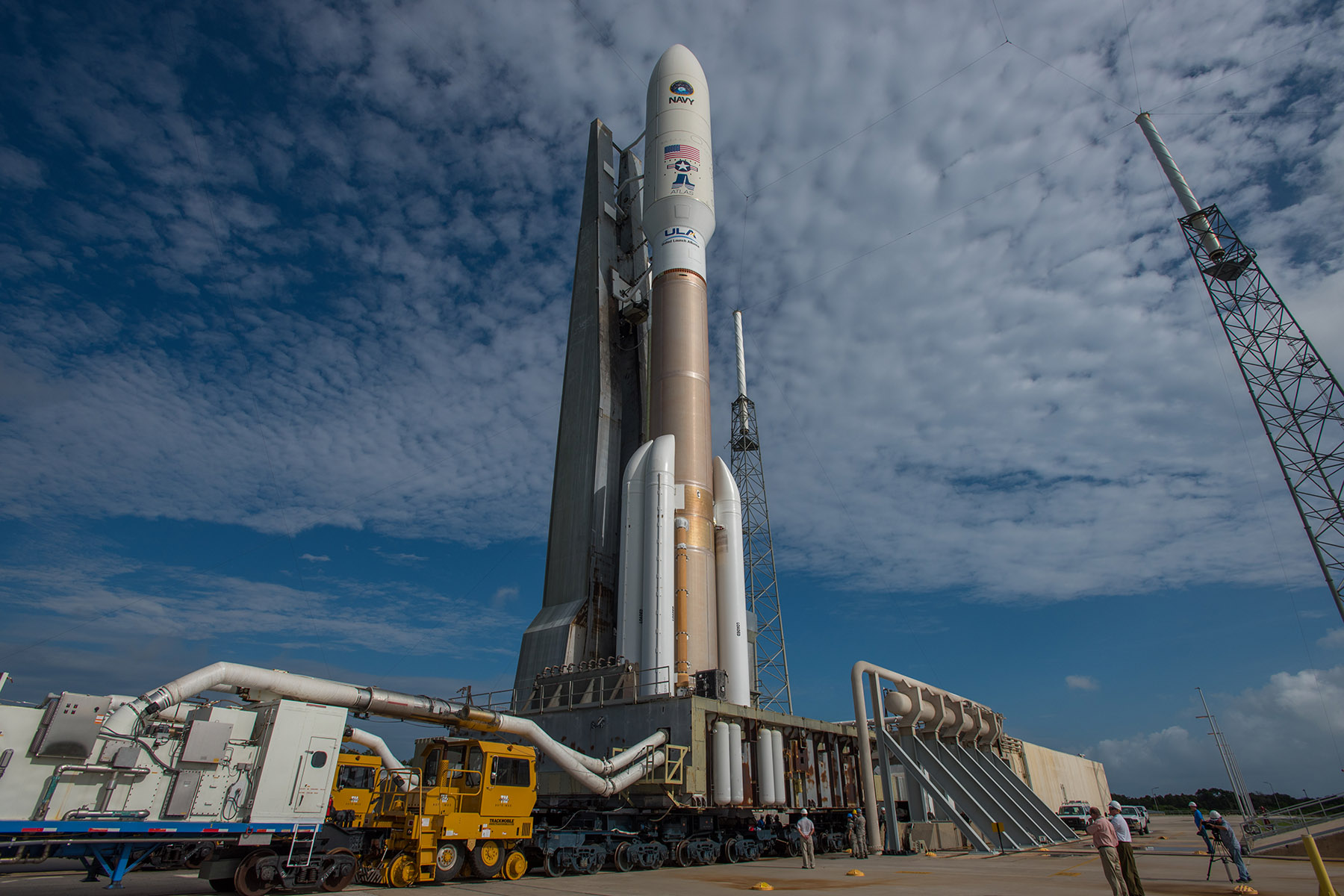
A United Launch Alliance (ULA) Atlas-V rocket is poised to fire the Navy’s Mobile User Objective System (MUOS-4) satellite into geosynchronous transfer orbit from Cape Canaveral Air Force Station, Fla., as early as Wednesday, Sept. 2, following a delay from Aug. 31 due to hazardous weather from defunct tropical storm Erika.
The 200-plus-foot-tall rocket was rolled from its Vertical Integration Facility to nearby Launch Pad-41 shortly after 8:30 a.m. EDT this morning. Liftoff is targeted for 5:59 a.m. EDT Wednesday, at the opening of a 44-minute launch window extending to 6:43 a.m. EDT.
The $7-billion MUOS program will have four operational satellites (built by Lockheed Martin) plus a spare and three large ground stations to provide UHF 3G data rate communications to highly mobile Army, Navy, Marine, Air Force, Coast Guard, and intelligence community users that previously could not get such high data rate services.
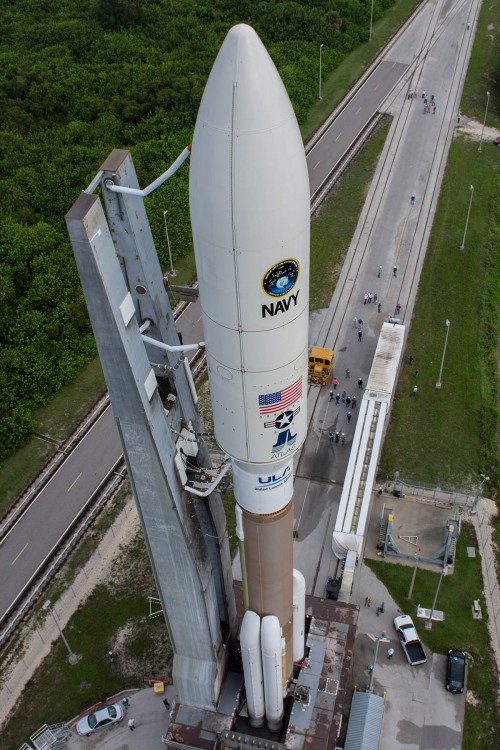
Cell phone-type voice, imagery, and data relay capability from pole to pole will be achieved using small uprated Army platoon level “Manpack” radios and terminals on vehicles, ships, submarines, and aircraft.
The Government Accountability Office (GAO) says, however, the unique MUOS ultra-high frequency multi-service capability can not be fulfilled until the program fully solves waveform communications software issues that have significantly delayed operational use of the spacecraft’s most advanced capabilities.
More than 90 percent of the MUOS capabilities remain underutilized, according to Christina T. Chaplain, GAO’s Director of Acquisition and Sourcing, speaking before a Senate Armed Services subcommittee in April.
MUOS program manager, Navy Capt. Joe Kan (pronounced Con), told AmericaSpace “I do not agree with that statement.” He said U.S. military services are conducting highly successful tests around the world, including in the Arctic and Antarctic with MUOS radios through the first three MUOS satellites parked over the equator covering the Atlantic, Pacific, and CONUS. MUOS-4 will eventually be parked over the Indian Ocean.
“The MUOS program faces challenges that prevent full use of its satellite capabilities,” Chaplain testified. “The Issue is related to the development of the MUOS waveform [UHF radio software] meant to provide increased communications capabilities beyond those offered by the [earlier Boeing] UHF legacy system.” The Boeing satellites were launched between 1993 and 2003.
The waveform issues have “caused delays in the use of radios being developed by the Army as the first operational terminals to incorporate the MUOS waveform. Use of over 90 percent of MUOS’ planned capability is dependent on resolving problems with integrating the waveform, terminals, and ground systems.” Chaplain testified. The 10 percent that is operational involves the MUOS legacy system that is providing continuous service to users operating lower data rate UHF systems with the aging Boeing satellites.
Although only 10 percent of current MUOS operations, Capt. Kan noted the continued and increased users serviced by the legacy system are vitally important to the current pre MUOS UHF operations. The UHF spectrum is the military’s communications workhorse because it is the only radio frequency that can penetrate jungle foliage, inclement weather, and “urban canyon” terrain like that under siege in Syrian cities.
The MUOS legacy system uses an 18-foot-diameter Harris mesh antenna at the bottom of each satellite, while the 3G system uses a 94-foot-diameter Harris mesh antenna mounted on top of the spacecraft, which also has solar arrays spanning 94 feet.
“The MUOS program extended testing to fix software and reliability issues with the waveform integration and now plans to complete operational testing by November 2015—a 17-month delay from the initial schedule estimate. As a result, the Army’s plans to field its MUOS-compatible radios have now slipped from 2014 to 2016, roughly four years since the first MUOS satellite launch,” Chaplain told the subcommittee.
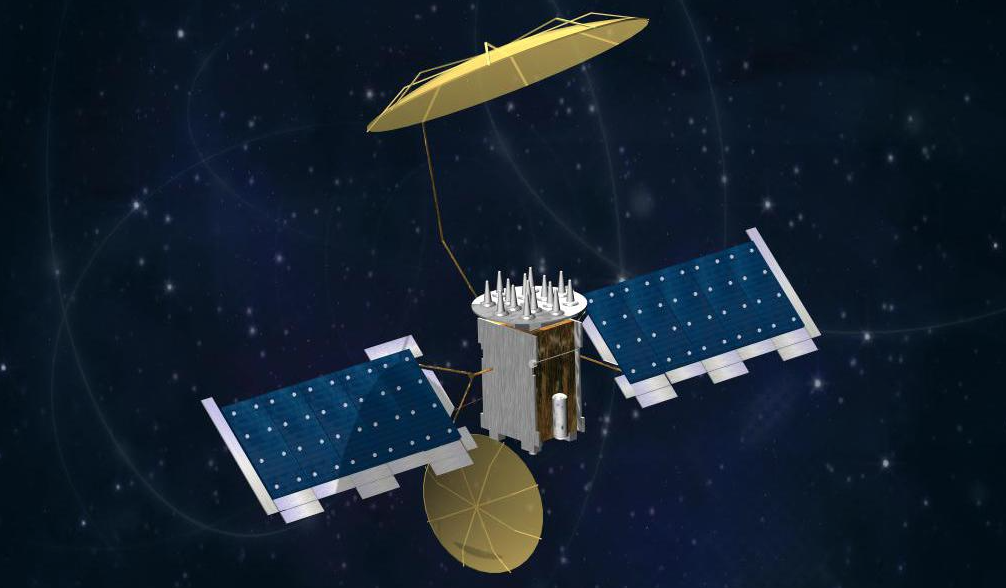
The MUOS-4 launch, as did the previous 3 satellites, will require the “551″ most powerful version of the Atlas-V to reach orbit, with five solid rocket boosters combined with its Russian RD-180 oxygen/kerosene engine to create 2.5 million pounds thrust at liftoff. The Atlas has only flown in the heavyweight “551” configuration previously on five of its 55 flights over the last 13 years since its inaugural launch. Three of those flights were the first three MUOS satellites. The other two were both for NASA spacecraft to worlds in the outer Solar System: New Horizons to Pluto in 2006 and JUNO to Jupiter in 2011.
The vehicle has a five-meter faring and single engine Centaur upper stage to put the 15,000-pound spacecraft into a 23,237 x 2,375 mile-high transfer orbit. The spacecraft’s mass will require three firings of the Centaur’s Aerojet/Rocketdyne RL10C-1 22,890 pound thrust oxygen/hydrogen engine to achieve the transfer orbit. About eight firings of the spacecraft’s own hydrazine engines are to eventually put the $611-million spacecraft in geosynchronous orbit.
The big MUOS antennas, as well as the satellite’s fixed antennas, are to create spot beams, the largest with a footprint of about 2,000-mile diameter. By splitting this continental coverage into several narrower beams, the Pentagon can reuse frequencies in different spots without interfering with each other. So in addition to boosting data rate, the Navy believes it can handle at least 15 times more communications volume with the new spacecraft.
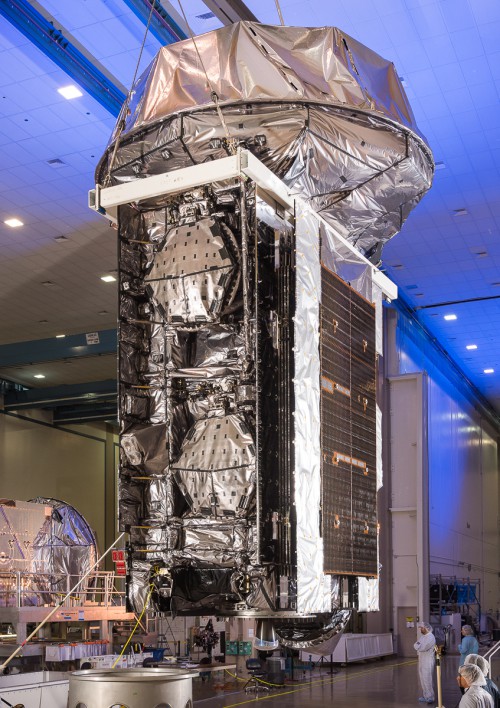
To achieve this, the Navy, Lockheed Martin, and its subcontractors adapted a commercial third generation Wideband Code Division Multiple Access cellular phone network architecture and combined it with geosynchronous satellite capabilities.
Although the Air Force oversees most Pentagon space systems, the Navy is responsible for all UHF narrowband satellite communications. MUOS should provide communications at up to 40.21 Mbps compared with 3 Mbps for the old UHF system, the Navy said.
The Army is doing Manpack radio tests at Fort Bragg, Fort Drum, and Fort Lewis in advance of multi-service operational tests that will start in October, said Army Col. Jim Ross, program manager for Army tactical radios.
The Army’s Manpack radio is the first man-portable radio to be used with the MUOS waveform, and it will be the primary MUOS terminal for ground users. The Army developed a MUOS High Power Amplifier accessory, which replaces one of the Manpack’s standard High Power Amplifiers, so the MUOS waveform can run on a standard Manpack radio. By pairing the Manpack radios with the MUOS waveform, tactical users in advanced positions or remote areas can be linked to the entire Department of Defense military global communications network.
“Tests starting in October will tell us the operational viability of the system, which we fully expect to see,” said Col. Ross. With that operational test data, Ross said he can obtain the Army leadership’s approval for fielding decisions for the MUOS high-powered amplifiers need for the Manpack radios. “We are very excited about this capability,” Col. Ross said.
Today there are 200,000 terminals that use UHF narrowband communications, said Iris Bombelyn, Lockheed Martin vice president for narrowband communications. “MUOS today is delivering capacity that would not be there today without the new spacecraft, “ she said.
“I will tell you the MUOS system works very well and we are linking at will with northern and southern regions,” said Capt. Kan. Routine communications from within 30 miles of the North Pole have been demonstrated from a C-130 circling around the pole and on the north polar ice pack, said Bombelyn. South polar tests have been equally successful.
During one Antarctic test led by the Air Force Research Laboratory (AFRL), Lockheed Martin, and the Navy, a MUOS test team was able to establish 3G cell phone type service within 20 minutes of landing on the south polar ice pack, said Michael Gudaitis, the AFRL team leader. The test team was able to establish 3G cellular quality “from places around the Antarctic no other radio or cell phone would work.”
Although important for future polar operations, the tests were not the first satellite communications made from Antarctica. The Amundsen-Scott South Pole Station routinely communicates with U.S. sites via GOES weather spacecraft, the Tracking and Data Relay Satellite System, and some commercial communications satellites, according to the National Science Foundation.
Follow our MUOS-4 Launch tracker for regular updates and IVE COVERAGE on launch day!
Be sure to “Like” AmericaSpace on Facebook and follow us on Twitter: @AmericaSpace
Missions » MUOS » MUOS-4 »





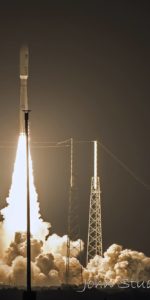
Twilight launches are always a treat. What a beautiful sight as the Atlas arched through daylight against the backdrop of the pre-dawn sky, it looked like it was headed straight to Venus!